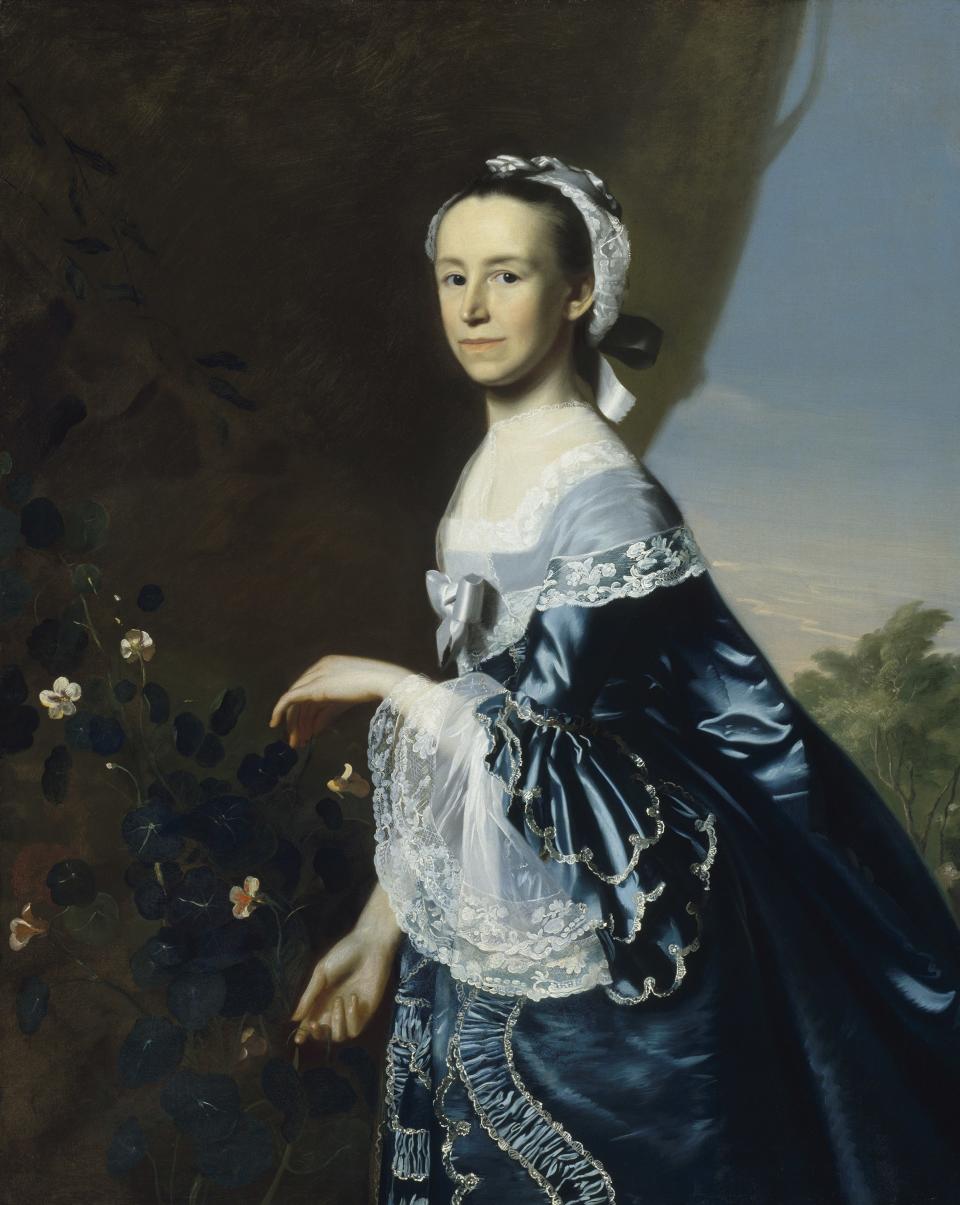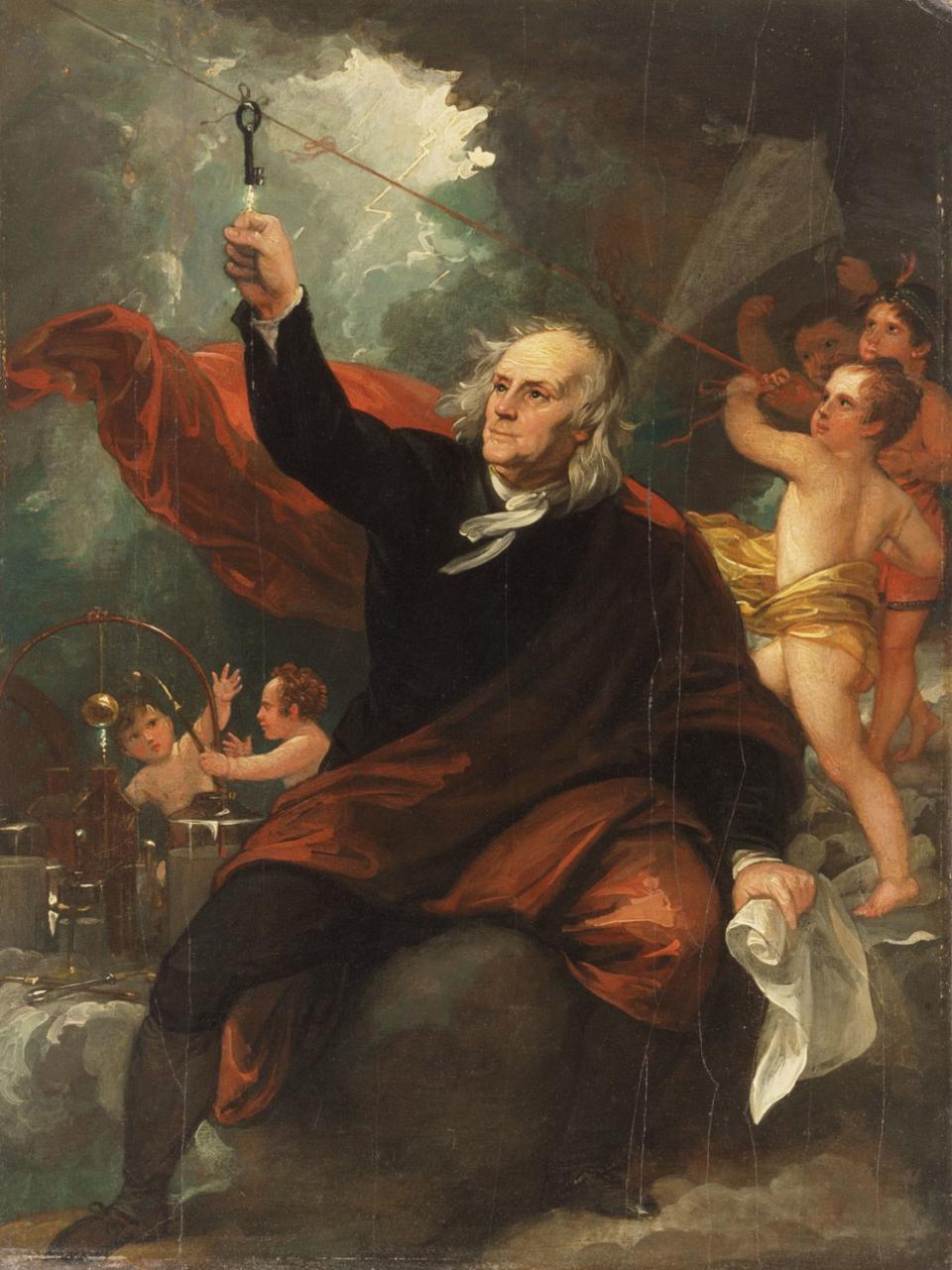Why the Super Bowl Outcome Will Now Determine the Fate of Two Major Paintings

From the gridiron to the museum galleries, stakes are high for Sunday's Super Bowl LII. And in honor of the New England Patriots battling the Philadelphia Eagles, a hometown museum of each team is putting a serious wager on the big game: The Museum of Fine Arts, Boston, and the Philadelphia Museum of Art have each agreed to loan an iconic painting from their respective collections to the winning city's museum, depending on who wins the title.
The bet came to fruition after Philadelphia Museum of Art director Timothy Rub approached MFA director Matthew Teitelbaum with an idea for an art wager. Matthew loved the idea, and set out with the MFA's collections team and curators to determine what piece would be the perfect one to represent New England.
"We decided that our great female patriot Mercy Otis Warren would be perfect to represent Boston," says Karen Frascona, Public Relations Director for the MFA.

The piece, Mrs. James Warren (Mercy Otis), about 1763, by John Singleton Copley, is an appropriate pick for the New England museum. A proud patriot, Mrs. Warren was a woman way ahead of her time. According to the MFA, as a child, she was allowed her to attend her older brother’s lessons with a tutor as he prepared for Harvard, a privilege most women of the day would have been denied. Later, she was encouraged by her husband, successful merchant James Warren, to compose essays, poems, and plays with a sharp, satirical eye that examined the political landscape of her day. Her most famous work is the three-volume History of the Rise, Progress, and Termination of the American Revolution.
While Warren was bursting with literary potential, the oil on canvas painting depicts her in traditional feminine roles. Dressed in a stylish blue satin sacque dress, lace stole, and lace ruffled sleeves, she gently touches the vines of Nasturtiums—edible flowers that were known to be symbolic of patriotism. According to the MFA, her level gaze and reassured mouth gives viewers a clue that in just a few short years, she will bypass the traditional feminine roles the time period expected of her.

The Philadelphia Museum of Art's pick is Benjamin Franklin Drawing Electricity from the Sky, 1816, by Benjamin West, one of the collection's signature pieces. Known as one of America's founding fathers, Franklin was renowned as a scientist, writer, and inventor. The painting depicts Franklin's 1752 experiment that proved lightning was a form of electricity. Holding a key attached to a kite under a stormy sky, the painting takes a step away from reality with Franklin's placement on clouds, surrounded by cherubic assistants.
While the length of loan time has yet to be determined by the two museums, both are prepared to give up a signature piece after the two teams battle it out on the football field in Minneapolis on Sunday.
"The MFA’s superb portrait of Mercy Otis Warren by John Singleton Copley would be great to have in Philly for a while. And if we have to send Benjamin West’s portrait of Benjamin Franklin back to his native city for a few months, we’ll be fine with that," says Philadelphia Museum of Art director Timothy Rub. "Let the best team win!”

